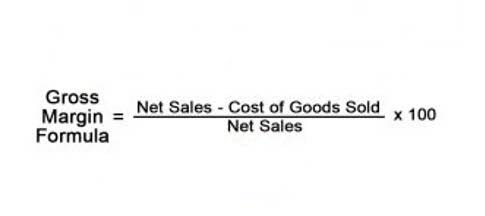Bookkeeping
Payment Reconciliation: Definition, Best Practices, and How You Can Do Better
23 de junio de 2023by admin
0 Comments

It involves repetitive tasks, delays in identifying discrepancies, and limited real-time visibility. These challenges increase operational costs, risk of inaccuracies, and slow financial closing. Modern payment reconciliation tools harness the power of AI and machine learning to improve accuracy and efficiency. These technologies can identify patterns, predict matches for ambiguous entries, and even learn from past corrections to enhance future reconciliations. To maximize the benefits, provide feedback https://www.bookstime.com/ loops in the system so it learns from human inputs, further reducing manual intervention over time.

The more proactive and structured the approach, the easier it is to maintain financial integrity and support business growth. In the complex world of online payments, even small mistakes with the accuracy of transaction data can have big consequences. That’s why payment reconciliation – the process of ensuring that payment transactions data align between internal, payment gateway or bank records – is so crucial. In this edition of Payments 101, we will cover the basics of payment reconciliation and its advantages for merchants.

Regular payment reconciliation is crucial for accurate financial reporting, compliance with laws and regulations, and optimizing operational efficiency. Traditionally, reconciling payments required finance teams to manually match incoming payments with their corresponding invoices or ledger entries, a time-consuming task prone to errors and inefficiencies. Automated payment reconciliation transforms this by introducing what is payment reconciliation advanced features like transaction matching, customizable reconciliation rules, and real-time monitoring. This allows businesses to maintain accurate and up-to-date financial records, while significantly reducing manual effort by eliminating human errors. Moreover, discrepancies are flagged instantly, enabling quicker resolution and ensuring smoother cash flow operations. This process is essential for verifying the accuracy of financial transactions, avoiding errors or discrepancies, and maintaining the integrity of financial records.

Rocco leads the delivery of new Payment features and functionality to ensure increased Accounts Payable efficiency, improved payment security, and greater visibility into your payments. Before joining MineralTree, Rocco held previous positions in corporate strategy and process improvement for a retail brand and boutique consulting firm in Boston. Rocco holds a bachelor’s degree in Business Administration from Boston University and is pursuing a Masters of Business Administration from Boston University’s Questrom School of Business. Review the reconciliation process within your organization and assess for opportunities to increase efficiency. Payment reconciliation is often a heavy pain point for organizations, particularly those that handle more than 500 payments per month.
All of this is to say that discrepancies can and do happen, and as payments volume grows and the stack becomes more complex, the frequency of errors is increasing all the time. Implementing these best practices requires commitment and consistent effort, but the payoff in accuracy, efficiency, and vendor relationships makes it worthwhile. Start by choosing one or two practices that align with your current challenges and gradually expand your implementation. Better reconciliation means better time management — and a healthier financial outlook. That’s why it’s essential to utilize software tools for automated reconciliation that streamline data entry, matching, and flagging discrepancies. Close the reconciliation process by updating accounting records, generating reports, and storing documentation for auditing and compliance purposes.

A well-documented financial system simplifies reconciliation and helps resolve disputes quickly. By comparing and validating transaction data, you can identify discrepancies, errors, and anomalies in your financial statements. This process allows businesses of any industry and size to maintain the integrity of their financial data and provides a solid foundation for decision-making. An example of payment reconciliation is comparing a customer’s payment received via bank transfer with the corresponding issued invoice. The accountant ensures the payment amount matches the invoice, and both are accurately recorded petty cash in the company’s accounting system, resolving any discrepancies. It includes recording a transaction (payment or billing) in different ways, like using accounting software, saving receipts, or maintaining a spreadsheet of payment records.
This guide will help you understand how to optimize your payment reconciliation workflow, detect discrepancies early, and maintain financial integrity. AP automation platforms like MineralTree can simplify reconciliation by automating the AP process from invoice capture through payment execution. For example, MineralTree’s platform initiates a single debit transaction for a payment batch of all the bills upon successful payment processing, syncing information automatically between the AP and ERP systems. Then check your business’ bank feed to tie the payments to any ERP transactions to ensure everything was processed correctly. If businesses don’t reconcile payment data for several months and eventually identify a payment discrepancy, it can be harder to investigate its cause or rectify the issue after a certain amount of time has passed.
